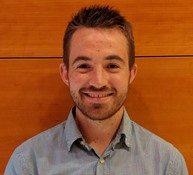Program Information
Reverse Engineering Fluence Maps From Dose Volume Histograms Using Inverse Optimization and Inverse Planning
A Babier1*, J J Boutilier1, A L McNiven2, T C Y Chan1, (1) University of Toronto, Toronto, Ontario, (2) Princess Margaret Hospital, Toronto, ON
Presentations
MO-F-CAMPUS-TT-4 (Monday, July 31, 2017) 4:30 PM - 5:30 PM Room: Therapy ePoster Theater
Purpose: To develop and evaluate a method that generates fluence maps and objective function weights from dose volume histograms (DVHs) for a complex treatment site such as head and neck.
Methods: We developed a novel inverse optimization model to derive objective function weights from clinical DVHs. We then used these weights in an inverse (treatment) planning problem to generate fluence maps and corresponding DVHs. We applied our approach to 217 clinical head and neck cancer treatment plans that were previously delivered. We compared the DVHs we generated (henceforth with the clinical DVHs using several metrics: objective function values, fractional volumes at different dose levels, and frequency of clinical planning criteria satisfaction. We also determined the frequency of nonzero weights for each objective function.
Results: The inverse plans were generally quite similar to the clinical plans. Median differences in objective function values between the clinical and inverse plans were between −0.8% and 1.6%. Median differences between the clinical and inverse DVHs were ±1.4% fractional volume. For most structures, the difference in clinical planning criteria satisfaction between the clinical and inverse plans was at most 1%. For structures where the two plans differed by more than 1% in planning criteria satisfaction, the difference in average criterion violation was less than 0.5 Gy. The objective weight vectors returned by the inverse optimization model had fewer than 27 nonzeros (38.5%) on average.
Conclusion: We demonstrate that clinical DVHs can be closely reproduced using a combination of inverse optimization and inverse planning methods. Such an approach could be integrated into the current clinical planning paradigm to better initialize the planning process and improve planning efficiency. It could also be embedded in a knowledge-based planning or adaptive radiation therapy framework to automatically generate a new plan given a predicted or updated target DVH, respectively.
Contact Email:
